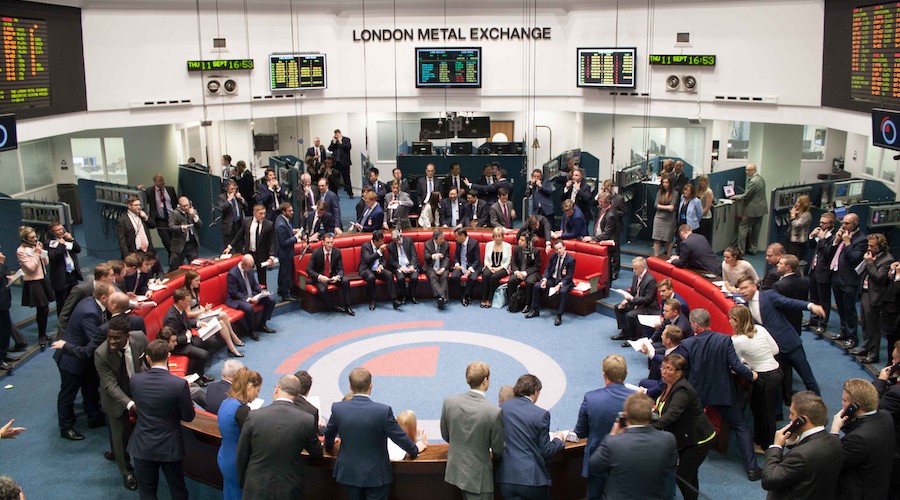
Just three months after winning its legal case over the handling of the 2022 nickel crisis, the London Metal Exchange (LME) is set for a return visit to London’s High Court.
Last time it was US hedge funds seeking damages for cancelled nickel trades. This time it’s environmental activists targeting Indonesian copper.
Two pressure groups, London Mining Network (LMN) and Global Legal Action Network (GLAN), accuse the LME of facilitating the sale of “dirty metals”, thereby breaching British anti-money laundering laws.
The metal in question is copper produced at the giant Grasberg mine in Indonesia. What GLAN describes as “a landmark case” is designed to highlight alleged environmental damage at the mine.
It’s something of a legal curveball for the 147-year old industrial metals exchange, which described the action as “misconceived”.
The timing is also ironic, since the LME is in the process of suspending around 10% of its listed brands for failing to meet a deadline for submitting responsible sourcing documentation.
The case against the LME doesn’t seek damages. Nor is it against Freeport McMoRan, opens new tab, which is part owner and operator of Grasberg.
Rather, its aim appears to be to use the LME’s status as a UK-regulated investment exchange to amplify allegations of “environmental crime” at Grasberg.
The specific lever is the LME’s “GRESIK” brand of copper produced by PT Smelting, which processes Grasberg concentrates.
The immediate goal, according to LMN, is to “force the LME to revisit the rules under which it lists metal for trading on its Exchange”.
The ultimate target is Grasberg’s tailings management system in the rainforest of Indonesia’s Papua province, which it and GLAN allege is contaminating local water supplies.
Freeport’s 2022 sustainability report, opens new tab claims “the controlled riverine tailings system” at Grasberg is the best site-specific option, and “poses the lowest risk to people and the environment”.
PT Indonesia and every other metal producer with a listed brand is required to provide to the LME proof of compliance with the OECD principles of responsible mineral supply chains and, from the end of last year, ISO certification of environmental and health and safety standards.
Several producers missed the Dec. 31 deadline for the latter and the LME is now in the process of suspending around 10% of its 435 registered metal brands for non-compliance.
The exchange said it “fully expects that a proportion of these brands will be able to re-list in due course, once they have completed the work to address the requirements of the Policy”.
The LME’s latest brand list includes 59 with a suspension date. Some of the suspensions precede the end 2023 cut-off deadline and likely denote a cessation of production at the designated facilities.
Most, however, have been announced since the start of January, with a heavy bias towards metal listed against the LME’s two aluminum alloy contracts.
Liquidity has drained from both contracts in recent years and registered stocks have dwindled to minimal levels. Many alloy producers have probably simply chosen to avoid the extra paperwork for a product they aren’t trading.
But the current spate of brand suspensions is a sign of how serious the LME is about ensuring producers meet its responsible sourcing requirements in exchange for the seal of LME good delivery approval.
The LME’s 2018 Position Paper, opens new tab on Responsible Sourcing noted that its brand listings “are seen as the standard for metals producers”, and “it is now appropriate for the LME to leverage the importance of its brand lists to give further momentum to he global responsible sourcing initiative”.
The exchange has since spent considerable time and resource on evolving its green credentials.
The LME, however, can’t itself set the rules governing the mining sector’s environmental, social and governance standards (ESG).
“The LME does not consider itself to lead the market in a particular direction (but rather) its role is to provide a service and to adapt that service as the needs of the market evolve,” it said in the position paper.
Which is why its current policy maps onto existing accepted standards such as the OECD guidance on responsible mining and the ISO codes on environmental management and work safety.
Nor does the LME seek to push ESG compliance upstream from the plants that produce the metal to the mines that generate the raw material.
This understandably conservative approach is too slow for activist groups such as LMN, opens new tab, which aims to “hold London-based mining companies to account by working closely with mining-affected communities” around the world.
The group has already targeted the likes of Glencore, Anglo American and Rio Tinto over their environmental and social impact.
Setting their legal sights on the LME marks an escalation of that campaign from metal producers to financial institutions and other service providers such as exchanges.
Just as was the case with the LME’s High Court nickel drama, there will be plenty of others watching with interest its latest courtroom challenge.
(The opinions expressed here are those of the author, Andy Home, a columnist for Reuters.)
(Editing by Jan Harvey)
Comments